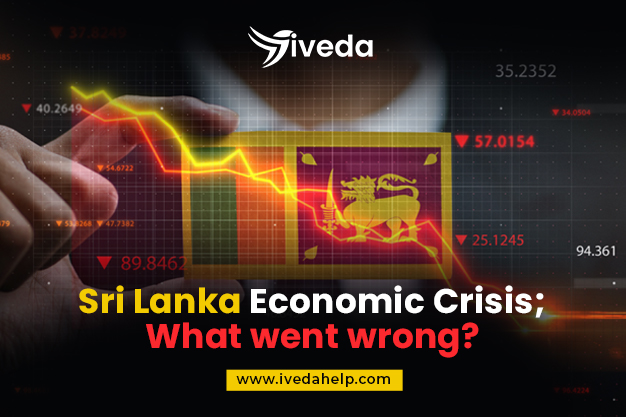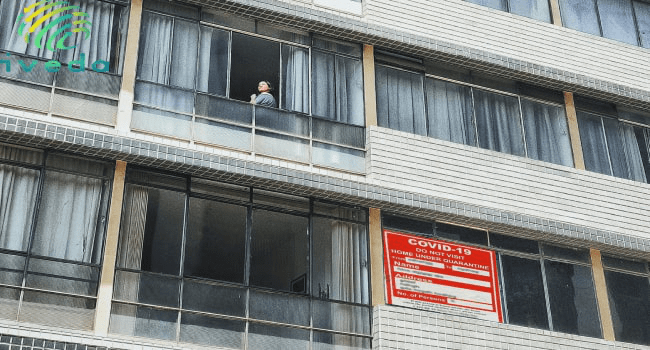Sri Lanka Economic Crisis; What Went Wrong?
Despite a myriad of good things occurring in the world every second, we’ve been living in drastic times. Pandemics, wars, and economic crises point to the actuality these are not the soundest times. In a Pandemic, one fights a virus, while in a war, the enemy is an outsider, but in an economic crisis and famine, one fights with oneself. With a sudden notification popping on the phone, we are acquainted with the fact that Sri Lanka’s Economic Crisis has taken over the country severely. The country’s economic backbone is currently crushed into bits and bytes, and the foreign reserve is draining with every passing minute. This article will discuss the ongoing Sri Lanka crisis and the significant reasons why it happened. Before proceeding with it, let us assess the poor economic situation in Sri Lanka.
How is the economic threat affecting the people?
Increase in inflation: Unlike India, Sri Lanka is dependent on other countries to fulfill its basic needs. Having a surplus foreign reserve is more than just a necessity for such a country. Due to declining foreign reserves, the imports in the country have been severely affected henceforth, witnessing a 25% growth in inflation within a week.
Power crisis: As the country heavily relies on imported fuel, the Sri Lankan public has witnessed regular power cuts due to less power availability. The concerned government officials were instructed to save power by turning off the street lights. Only four to ten hours of electricity is provided to the general public daily to reduce fuel consumption. This indeed is a dark time for the nation. In addition to these, school exams have been postponed to combat the shortage of printing and fuel.
Struggle for food: The prices of necessities are at their all-time hike, and the rice prices are likely to grow to Rs. 500 per KG by the end of next week. As per the local fruit vendors, the Apples that cost Rs. 500 per Kg last week have now doubled in price (Rs. 1000 per KG). On the other hand, more than a 55% increase has been dissected in the prices of Pears and some vegetables. In the coming days, the prices of necessary vegetables are projected to grow at a higher pace. Concerned with the forthcoming circumstances, a few Sri Lankans have started to flee from the country and aspire to refuge in India and other countries nearby.
Reasons why the crisis existed
Economic crises aren’t just created out of thin air, but a whole lot of factors contribute to them. Scrutinizing the ongoing matters in the country, we found that there are many reasons why this severe trouble has taken over in the first place. It is imperative to know that the country’s most prominent economic sectors are; travel & tourism, tea export, garments, fabric, rice production, and other agricultural products. As a matter of fact, the travel and tourism sector contributes more than 12% of Sri Lanka’s GDP. When it comes to the Agriculture sector, the contribution to the overall GDP is nearly 8.38 percent. In addition to these sectors, international employment contributes highly to foreign exchange. However, in a series of a few events, the country’s Foreign Reserve has gone to zilch. The reasons right from the financial debt, trade deficit, and yielded strategies are included in this article; we will discuss all these reasons individually.
Yielded strategy of organic farming: This factor added to the financial burden and shortage of food in the country. In order to counter the financial debt, the government introduced the concept of organic farming. The primary rationale behind this was to reduce the dependency on other countries. Moreover, this method was supposed to help the government cut the capital expenditure on imported fertilizers and pesticides. Sri Lanka is self-sufficient in its rice production, so the government doesn’t have to import any rice from other countries. Now, this, at some stage, sounds like a good decision; however, due to unforeseen circumstances and a lack of preventive and fallback methods, the organic farming plan failed very badly. It is to be noted that organic farming can reduce production up to a significant extent. Six months after the ban, the government had to stock rice worth $450 million from other countries. Henceforth, the impetuous implementation led to extreme circumstances. This didn’t just add more burden to the country’s economy but also contributed to a food shortage.
Debt-struck economy: The Sri Lankan economy is debt-struck and has declined rapidly due to increasing debts and a few failed projects. As per the sources, Sri Lanka’s debt was 94% of its GDP, which has now climbed up to 119%. It is way more difficult for Sri Lanka to fight back in such circumstances, and hence in such cases, only foreign aid can help the country.
Tax reduction: One of the reasons for an emptied foreign reserve is the reduction of VAT in the country to nearly half. In the year 2019, the government came up with counterproductive policies of strengthening its supply-demand curve. The ruling promised to reduce tax on the items, which would lead to more demand. The government sought profits by multiplying its production and demand. However, this, too, didn’t work out well. A year later, the global pandemic COVID-19 knocked the world’s economy and ended up many giants, such as India’s, to degrow at -23.9%. In the same year, Sri Lanka’s GDP was down to -2%. Consequently, a rapid decline in the demand and availability of the customers was witnessed; subsequently, this plan’s no fall is no surprise.
Easter Bombings: As mentioned earlier, the monetary losses didn’t happen in just a day but years back. Travel and Tourism are the country’s backbones that contribute more than the Agriculture sector in Sri Lanka. The tourists contributed a good share of wealth to the country’s economy, and this sector was severely impugned, which led to a considerable loss. Back in the year 2019, A coordinated series of Islamist terrorist suicide bombings in Colombo, Sri Lanka, targeted three churches on Easter Sunday and three luxury hotels the next day. Later that day, two explosions occurred at a guest house in Dehiwala and a housing complex in Dematagoda. The bombings killed 269 people, including 45 foreigners, three police officers, eight bombers, and at least 500 others wounded. As well to the three churches bombed during Easter services, hotels were also targeted, including the Shangri-La, Cinnamon Grand, Kingsbury, and Tropical Inn. Due to security reasons and wreckage, the tourism backbone was affected. Henceforth, the travel and tourism sector has not been revived to date.
Conclusion: These are all the main reasons that contributed to the ongoing Sri Lanka Economic crisis.
Disclaimer: This article has been written for educational purposes only. We have conducted independent research on the topic and considered every bit and byte. We do not intend to vituperate any government body.
We pray things will be fine soon!
For more information on such topics, stay tuned with us.

























































































